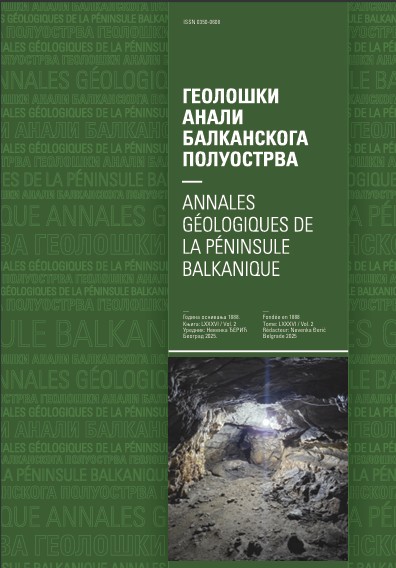The subsurface geology along the route of the new bridge at Ada Ciganlija Island (Belgrade, Serbia)
Abstract
The largest single-pylon, cable-stayed bridge in the world was opened in Belgrade on January 1, 2012 and it passes over the tip of the Ada Ciganlija Island. Its monumentality, architectural design and construction innovations became a new symbol of Belgrade. Core samples from the boreholes drilled for the construction of the bridge revealed a relatively complex subsurface geological structure. An Upper Cretaceous-Paleogene flysch formation and Middle Miocene Sarmatian sediments were found near the surface on the right bank of the Sava River. However, at the tip of Ada Ciganlija, the Upper Cretaceous-Palaeogene flysch strata were found below several different Miocene and Quaternary units. In the deepest borehole DB-6, the flysch deposits were found at a depth of 80 meters. On the left bank of the Sava River in New Belgrade, only Upper Miocene Pannonian marls and Pleistocene and Holocene alluvial deposits were drilled. Based on a comparative analysis of the borehole sections and structural characteristics of the rocks, it could be concluded that the Pre-Quaternary units cascade subsided along sub-parallel faults towards N-NW.
Copyright (c) 2022 Geološki anali Balkanskoga poluostrva

This work is licensed under a Creative Commons Attribution 4.0 International License.










